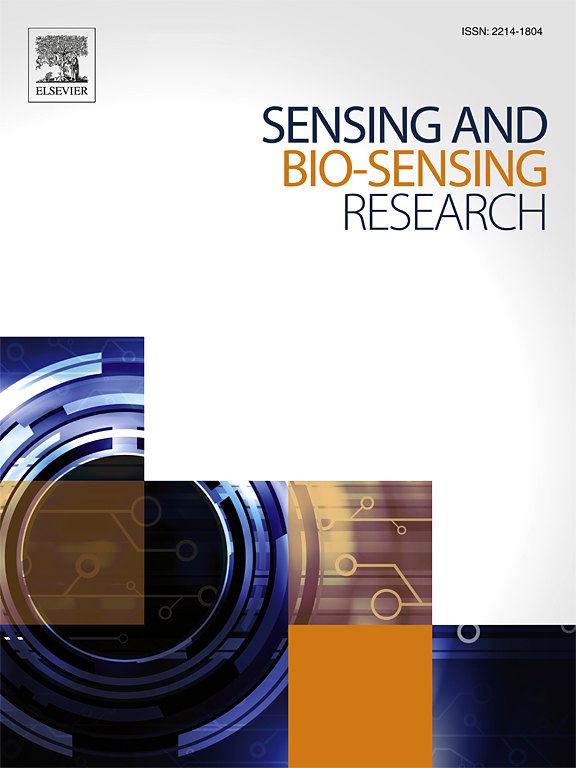Fiber laser generation of an ag/MoS2/PVP nanoparticle composite SERS sensor for benzene detection in water
IF 5.4
Q1 CHEMISTRY, ANALYTICAL
引用次数: 0
Abstract
One of the most widely used practices to detect chemical contaminants at ultra-low concentrations is Surface-Enhanced Raman Scattering (SERS), a highly sensitive technique that provides the unmatched sensitivity necessary for environmental and safety applications. In this work, we report the synthesis of a silver (Ag), molybdenum disulfide (MoS2) and polyvinylpyrrolidone (PVP) nanoparticle composite by fiber laser ablation in water to produce a high-performance SERS sensor by adapting both electromagnetic (EM) and chemical mechanism (CM) in a composite. The CM enhancement originates from MoS2 NPs charge transfer whereas the EM enhancement associated with localized surface plasmon resonance of Ag NP. Crystal violet (CV) was utilized as a probe molecule for evaluating the performance of the SERS sensor so produced. It was then utilized in the detection of trace amounts of benzene in DI, tape and river water with a maximum enhancement factor (EF) of 3 × 107 and a detection limit up to 0.001 nM confirming its high sensitivity, reliability and long-time stability as well as its potential as an ideal monitoring platform for benzene pollution.
光纤激光制备用于水中苯检测的ag/MoS2/PVP纳米颗粒复合SERS传感器
检测超低浓度化学污染物最广泛使用的方法之一是表面增强拉曼散射(SERS),这是一种高灵敏度技术,为环境和安全应用提供了无与伦比的灵敏度。在这项工作中,我们报道了在水中通过光纤激光烧蚀合成银(Ag),二硫化钼(MoS2)和聚乙烯吡罗烷酮(PVP)纳米颗粒复合材料,通过在复合材料中适应电磁(EM)和化学机制(CM)来生产高性能的SERS传感器。CM增强源于MoS2 NP的电荷转移,而EM增强与Ag NP的局部表面等离子体共振有关。以结晶紫(CV)作为探针分子,对所制备的SERS传感器的性能进行了评价。将该方法应用于DI、胶带和河水中痕量苯的检测,最大增强因子(EF)为3 × 107,检出限为0.001 nM,具有较高的灵敏度、可靠性和长期稳定性,是一种理想的苯污染监测平台。
本文章由计算机程序翻译,如有差异,请以英文原文为准。
求助全文
约1分钟内获得全文
求助全文
来源期刊

Sensing and Bio-Sensing Research
Engineering-Electrical and Electronic Engineering
CiteScore
10.70
自引率
3.80%
发文量
68
审稿时长
87 days
期刊介绍:
Sensing and Bio-Sensing Research is an open access journal dedicated to the research, design, development, and application of bio-sensing and sensing technologies. The editors will accept research papers, reviews, field trials, and validation studies that are of significant relevance. These submissions should describe new concepts, enhance understanding of the field, or offer insights into the practical application, manufacturing, and commercialization of bio-sensing and sensing technologies.
The journal covers a wide range of topics, including sensing principles and mechanisms, new materials development for transducers and recognition components, fabrication technology, and various types of sensors such as optical, electrochemical, mass-sensitive, gas, biosensors, and more. It also includes environmental, process control, and biomedical applications, signal processing, chemometrics, optoelectronic, mechanical, thermal, and magnetic sensors, as well as interface electronics. Additionally, it covers sensor systems and applications, µTAS (Micro Total Analysis Systems), development of solid-state devices for transducing physical signals, and analytical devices incorporating biological materials.
 求助内容:
求助内容: 应助结果提醒方式:
应助结果提醒方式:


